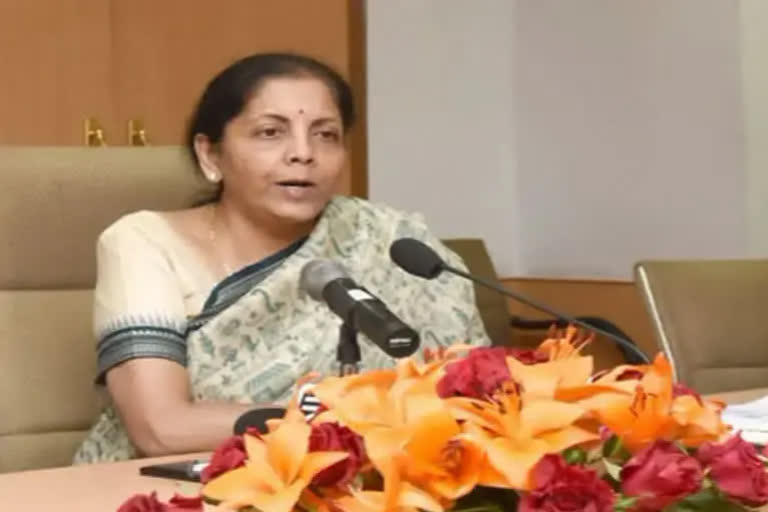New Delhi: Prime Minister Narendra Modi will release a comprehensive action plan on Saturday under the national logistics policy which aims at reducing the logistics cost and generating employment, an official said. Commerce and Industry Minister Piyush Goyal said, "the aim of the new policy is to facilitate seamless movement of goods across the country."
The policy would help reduce the logistics cost from about 13 percent of GDP to 7.5 percent of the GDP and generate jobs in the coming years, the official said on Thursday. The policy is formulated with a vision to develop a technologically enabled, integrated, cost-efficient, resilient, sustainable, and trusted logistics ecosystem in the country for accelerated growth.
The main parameters of the policy would include harmonization and standardization, trade and transport facilitation, digitization, and skill development. A comprehensive action plan would include integrated digital logistics systems, standardization of physical assets and benchmarking service quality standards, state engagement, human resource development and capacity building, export-import logistics, sectoral plans for efficient logistics, and facilitation of the development of logistics parks, the official added.
Under human resource development, the focus would be given to mainstream logistics in higher education, and the development of online training programmes. A task force may be formed with a mandate to identify action areas.
Under export-import logistics, the focus would be on addressing infrastructure and procedural gaps and developing institutional mechanisms for trade facilitation. Similarly, as part of the service improvement framework, the policy would talk about improvement in regulatory interface to enable seamlessness between sectors.
Further, the official said that an empowered group of secretaries (EGoS), constituted under the PM Gati Shakti, would monitor and review the implementation of the policy. A service improvement group would be there for the resolution of user issues.
High logistics cost in India impacts both external and internal trade. The cost in India is estimated at 13-14 percent of the gross domestic product against 9-10 percent in the US and Europe and 11 percent in Japan. No single department manages the sector, as it is currently managed by many ministries including road transport, shipping, railways, civil aviation, ports and commerce and industry, and finance.
Logistics plays an important role in the success of any business. The wider a company’s reach, the more customers it can attract and hence create more revenue.
Finance Minister Nirmala Sitharaman in her budget speech said, “A National Logistics Policy will be released soon. Inter alia, it will clarify the roles of the Union government, state governments, and key regulators. It will create a single-window e-logistics market and focus on the generation of employment, skills and making MSMEs competitive.”
Logistics sector at a glance in India
1. India’s logistics sector is valued at close to $300 billion and employs over 22 million people directly and much more indirectly, but unlike other sectors in India, the logistics sector is fragmented.
2. A recent report by McKinsey Global Institute (MGI), India’s logistics sector would expand at a Compound Annual Growth Rate (CAGR) of more than 10 percent, from $200 billion in early 2020 to at least $320 billion in 2025.
3. A Commerce ministry index in 2021 ranked Gujarat, Haryana, and Punjab at the top on the ease of logistics.
4. Among the Northern Eastern states and Himalayan UTs category, the leaders are Jammu and Kashmir, Sikkim, and Nagaland.
5. In India, inefficiencies have plagued India’s logistics for a long time. About 16% of India’s Agri Production is wasted at different stages of the supply chain.
6. The logistics sector makes up 14.4% of the country’s GDP, but it costs 14% of the GDP. The gap of $180 Bn per annum needs to be addressed to achieve the country’s dream of a $5 Tn economy.
7. Logistics costs in India are higher than those in developed countries. USA spends 9.5 percent of the GDP on logistics while Germany is even more competitive with a share of eight percent.
8. Gadkari said bringing India’s logistics cost to around 10% would make it comparable with around 11-12% in Europe, around 10% in the US, and below 10% in China.
9. Higher logistics costs in India could be ascribed to the lack of efficient inter-modal and multi-modal traditional systems thereby presenting significant future scope for development and efficiency.
Key Challenges in the logistics
1. According to a report by McKinsey, wastage caused by inefficiencies contributes to 4.3% of GDP, and, if not corrected, can increase to 5% of GDP or $100Bn.
2. One of the foremost challenges that the logistics sector faces today arises due to poor infrastructure.
3. Physical infrastructure impacts transportation which facilitates logistics.
4. The country faces challenges in port and roadways infrastructure which directly impacts the transportation of goods.
5. Fuel costs and policy changes directly impact the logistics sector, since the higher the costs of fuel, the higher the transportation and freight costs which would directly impact the logistic companies and businesses to stay afloat.
6. The economic and socio-political changes in policy would also result in inflation of prices, and in turn, affect costs and disrupt the supply chain.
7. Although the logistics industry has shifted to a more technologically friendly environment over the past few years, the industry still faces challenges in safeguarding the documentation, which would be paramount in substantiating claims at the time of arbitrations and litigations.
8. Lack of accurate data at the time of documentation along with several manual processes further aggravates this problem.
9. Maintaining import and export licensing.
10. Legal issues involve insurance policies, bank guarantees, and traversing through taxation compliances and implications.



